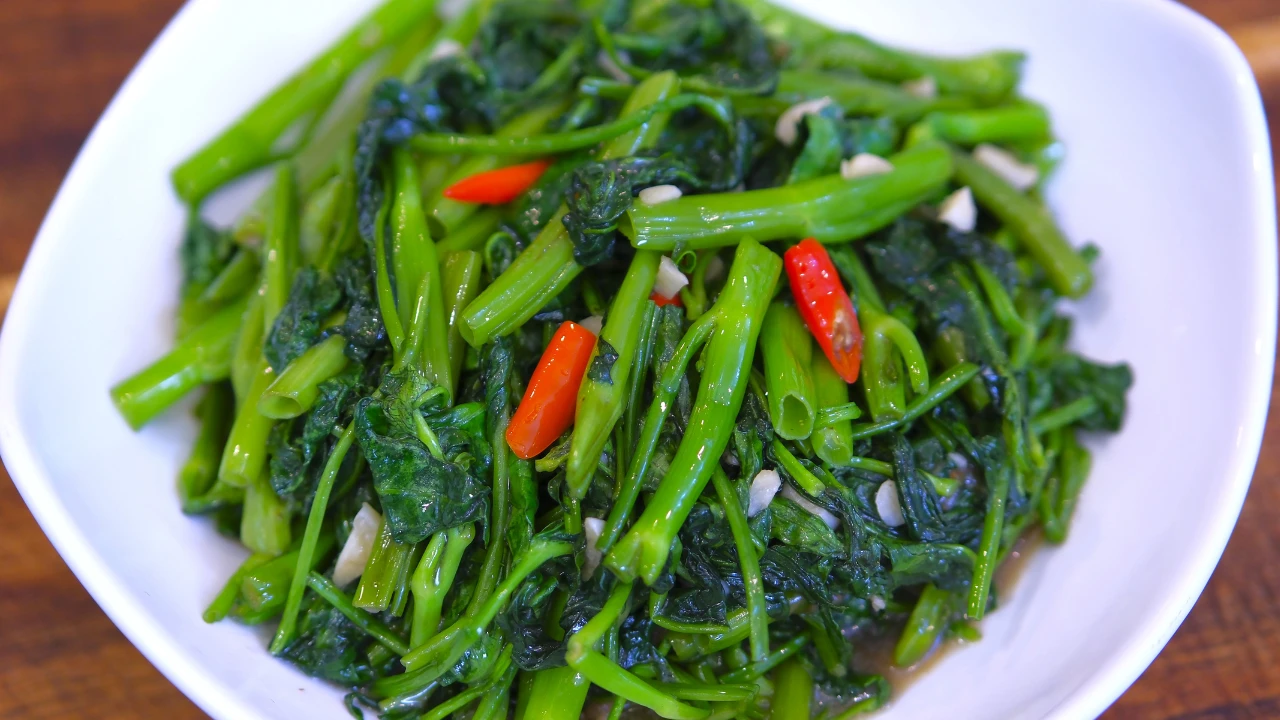
Chamberlains of London – Water Spinach, also known as kangkung or Ipomoea aquatica, is a popular leafy vegetable in many parts of Asia. This vegetable is known for its crunchy texture and rich nutritional value. Despite its popularity in various countries, Water Spinach is illegal in the United States. The ban on this vegetable surprises many people who enjoy its taste and health benefits. The primary reason for the prohibition involves concerns about environmental impact and invasive species regulations. The U.S. government aims to protect native ecosystems and agriculture from potentially harmful plants. Water Spinach’s fast growth and ability to spread rapidly can threaten local plant life and water systems. Authorities consider these factors seriously when deciding which plants to allow into the country. Understanding these reasons helps clarify why this tasty vegetable faces legal restrictions in the U.S.
Water Spinach is restricted due to its classification as an invasive species. Invasive plants can grow uncontrollably and displace native species, disrupting ecosystems. This fast-growing vegetable thrives in wet and tropical environments, making it capable of spreading quickly in suitable areas. Water Spinach’s rapid growth can clog waterways, affecting water flow and quality. The plant’s dense mats limit oxygen levels in water, threatening fish and other aquatic organisms. Because of these impacts, regulatory agencies like the USDA and state agricultural departments strictly control its import and cultivation. Water Spinach’s ability to reproduce easily through seeds and cuttings increases the risk of escape from controlled environments. The law aims to prevent unintended consequences on native ecosystems and protect agriculture. The ban also reflects lessons learned from other invasive plants that caused costly environmental damage. Thus, Water Spinach remains prohibited despite its culinary appeal.
“Read about: How to Bake the Perfect Pineapple Sponge Cake That Everyone Will Beg For”
Water Spinach poses significant environmental threats due to its aggressive growth habits. The plant can form thick layers over water bodies, limiting sunlight penetration for underwater plants. This shading disrupts the aquatic food chain, negatively impacting species diversity. Blocked waterways caused by Water Spinach can increase flood risks during heavy rains. The plant’s dense root systems alter sediment deposition patterns and water flow. These changes can degrade water quality and harm wetlands vital for wildlife. In addition to ecological damage, Water Spinach can affect agricultural irrigation systems by clogging canals and drains. Farmers and conservationists worry about such disruptions to food production and natural habitats. Prevention efforts include monitoring waterways and restricting the transport of Water Spinach. While many countries embrace this vegetable in their cuisine, the United States prioritizes environmental preservation. This cautious approach explains the ongoing prohibition of Water Spinach in many states.
Although Water Spinach is banned in the United States, some legal options exist for growers interested in similar crops. Many gardeners choose to grow spinach, Swiss chard, or other leafy greens that offer similar culinary uses. These alternatives provide nutritional benefits without posing invasive risks. Additionally, some states allow Water Spinach cultivation under strict permits for research or controlled environments. These permits require growers to follow strict guidelines to prevent the plant from escaping. Hydroponic or indoor farming methods offer ways to enjoy Water Spinach without environmental threats. Consumers who miss the vegetable’s taste may find it at specialty markets importing it legally from countries where it grows naturally. Educating growers and consumers about responsible cultivation and invasive species is crucial. Awareness helps maintain ecological balance while respecting culinary traditions. Thus, legal pathways and alternatives exist despite the ban on Water Spinach.
Water Spinach is just one example of many invasive species regulated worldwide. Invasive plants and animals threaten biodiversity, economy, and human health globally. Many countries maintain lists of prohibited species to protect their natural environments. The lessons learned from past ecological disasters highlight the importance of strict controls. While banning a beloved vegetable may seem extreme, it reflects a commitment to long-term environmental health. The Water Spinach case underscores the challenges in balancing cultural preferences with ecological responsibility. Public education and international cooperation remain key to managing invasive species risks. Understanding these dynamics helps explain why Water Spinach remains illegal in the United States. This knowledge encourages support for conservation efforts and smart agricultural policies. Ultimately, preserving native ecosystems benefits current and future generations by maintaining nature’s delicate balance.